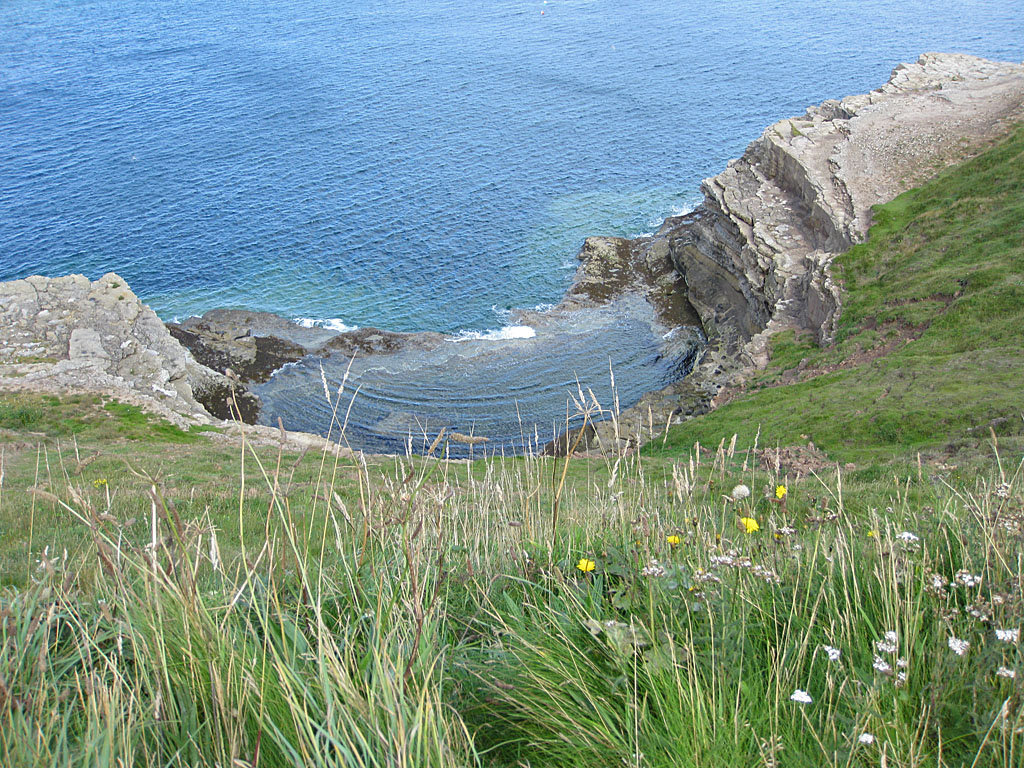Feb-2021
Five Stones in the Garden, or what have the Roman’s ever done for us?
It is probably one of the most quoted passages in film history. In Monty Python’s outrageous comedy, Life of Brain, at a meeting of the People’s Front of Judea, John Cleese asks:
‘What have the Roman’s ever done for us’?
‘The aqueduct’ comes the answer.
‘Oh. Yeah, yeah. They did give us that. Uh, that’s true. Yeah’.
‘And the sanitation’.
And so it goes on until, exasperated John Cleese says:
‘All right, but apart from the sanitation, the medicine, education, wine, public order, irrigation, roads, a fresh water system, and public health, what have the Romans ever done for us?’
So what did the Roman’s ever do for Filey, you might ask? Well, apart from a signal station, some pottery at Primrose Valley, possibly a road from Malton, maybe a jetty, but probably not an Emperor’s bath, not a lot really. Wander in the Crescent Gardens and you will see stones from Filey’s Roman signal station. To paraphrase Frank Sinatra, five stones in the garden is a poor reflection of one of the greatest civilisations in human history.
It is fair to say that the Roman’s trod lightly at Filey, at least as far as we know. Coastal erosion may well have swept several pages from the history book. We can safely say that the so-called Emperor’s Bath on the north side of Carr Naze has very little to do with the Emperor Constantine and more to do with Victorian quarrying and coastal erosion. Sadly, the Emperor Constantine almost certainly did not nip across to Filey to enjoy a celebratory bathe in the frigid waters of the North Sea after he was proclaimed Emperor of the Roman Empire at York in 306.

The Emperor’s Bath, © Pauline E
Whilst we are out on Carr Naze we may as well examine another claimed Roman artefact, the fabled ‘Roman Jetty’ that emerges during the Spring Tides. In his peerless book, Filey, from fishing village to Edwardian resort, Michael Fearon dismisses the ideas as ‘fanciful’. The ‘jetty’ is best viewed from the top of Carr Naze, it points towards Bempton Cliffs, its angle being quite distinct from the Brigg itself. Its origins has intrigued generations, but there is no archaeological evidence to support its supposed Roman origins. As far back as 1828 in his book The History and Antiquities of Filey in the County of York, John Cole claimed that the jetty had been constructed at ‘some very remote period’. However, at present the consensus seems to be that the ‘jetty’ is not man-made, but is a ‘cranch’, an accumulation of boulders built up by the actions of the tide. At least that was the view of Frank Gerald Simpson Yorkshire Roman Antiquities Committee and Thomas Sheppard of Hull Museum when they examined the site in 1922. However, in 1972 the Yorkshire Federation of Sub-Aqua Clubs sent no less than sixty divers in search of the jetty’s Roman origins. Unfortunately no definite conclusions were arrived at.
Of course, the Roman’s built their famous roads, but would they have built a road to serve a signal station? Given that the signal station could have been easily reached by sea, why commit huge resources to building a road? Of course, it may well be that there were other Roman sites in the vicinity that have either not yet been rediscovered or have succumbed to coastal erosion. Hints of a road from the fort and settlement at Malton (the fabulously named Derventio Brigantium) have been found over the years. In 1862 during the installation of a new drain at Norton, a cobbled road and the neck of a Roman jar was found; hinting at an eastbound road. It has been claimed that a Roman road ran south of the present day A64 and A1039, before running north of Muston and entering Filey through what is now the Wharfedale estate. Several speculative maps have been drawn up, but precious little evidence has been unearthed.
Francis Haverfield, the renowned ‘father of Romano-British Archaeology’, said that he ‘could never find any trace of a Roman road in Filey’. Ancient roads have been unearthed, such as in 1898 when, during the laying of a water main, a cobbled road was revealed that had traces of cement used in it; apparently the Roman’s were famous for the use of cement in their roads. In 1935 the laying of electric cables on Station Road revealed a road comprised of large cobbles. However, the Roman’s did not use large cobbles, so the road was likely to be from another era. Two years later in 1937, during work on the railway level crossing another section of road came to light. Unfortunately, there is little detail as to what exactly was found and some reports of the time suggest that the road was post-Medieval.
More recently Roman pottery was discovered by the York Archaeological Trust whilst they were working on land at the junction of Queen Street and Reynolds Street. In 1924 fragments of Roman pottery was discovered on the south side of Primrose Valley. Apparently the finds corresponded exactly with the finds at the signal station on Carr Naze.
Hints, but no more than that. However, at least the famous signal station is grounded in historical fact. It was the southern-most signal station of five along the Yorkshire coast: the others being Huntcliff near Saltburn; Goldsborough, near Whitby; Ravenscar; and Castle Hill at Scarborough. The Filey station was in use from roughly 375-410 AD. There was a beacon on top of a tower, which would be lit if enemy ships were seen approaching. Landslips have provided evidence of the station, but also threaten to wipe it from the map. Indeed, the signal station was rediscovered in November 1857 after a landslip had revealed the site. An archaeological investigation followed and five stones recovered today stand in the Crescent Gardens. One of the stones has a depiction of what appears to be a hound chasing a stag. The site of the signal station has been further investigated by digs in 1927 and in 1993-4. Quite a number of artefacts were found, including bronze coins, pottery and animal bones. The highlight of the finds was a three foot high bronze statue of the god Mercury, it can be viewed in the Rotunda Museum at Scarborough. Today there is an explanatory board telling the story of the signal station.

comment this post